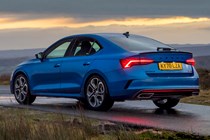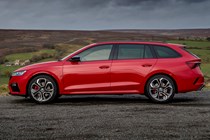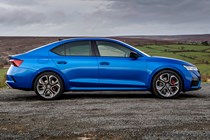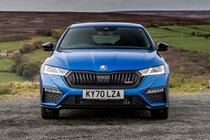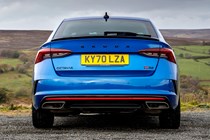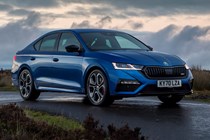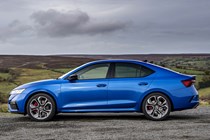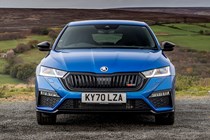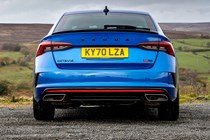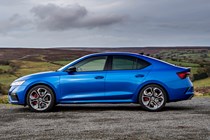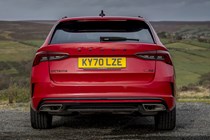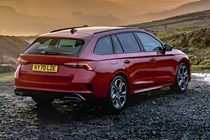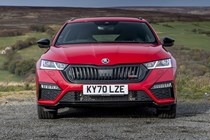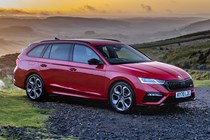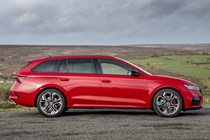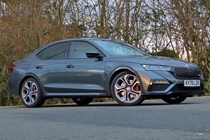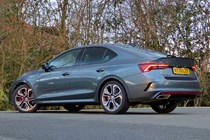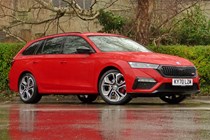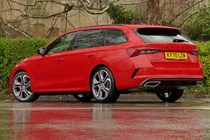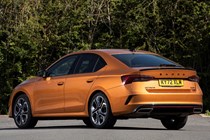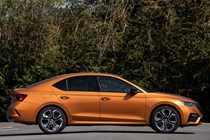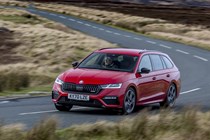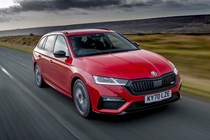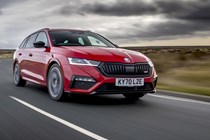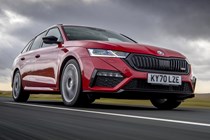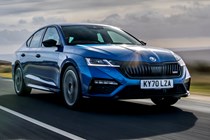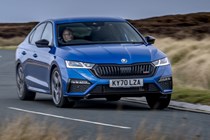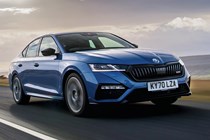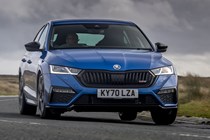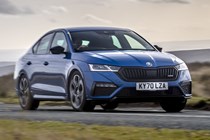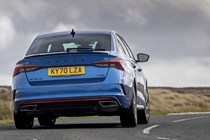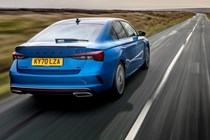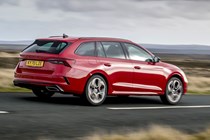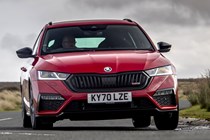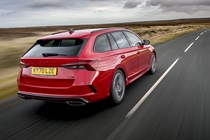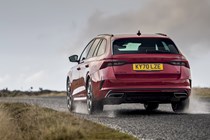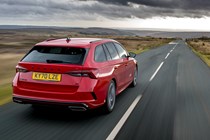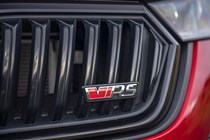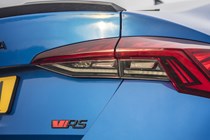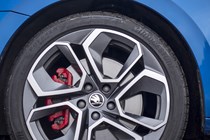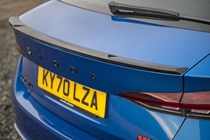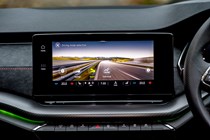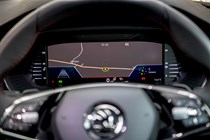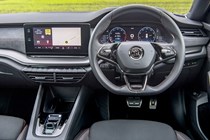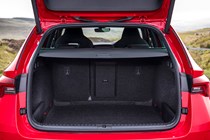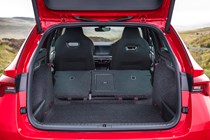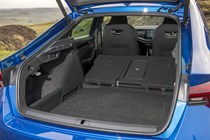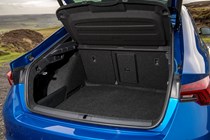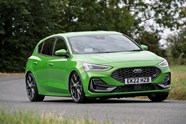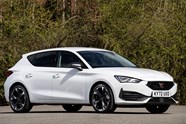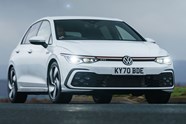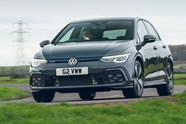
Skoda Octavia vRS review
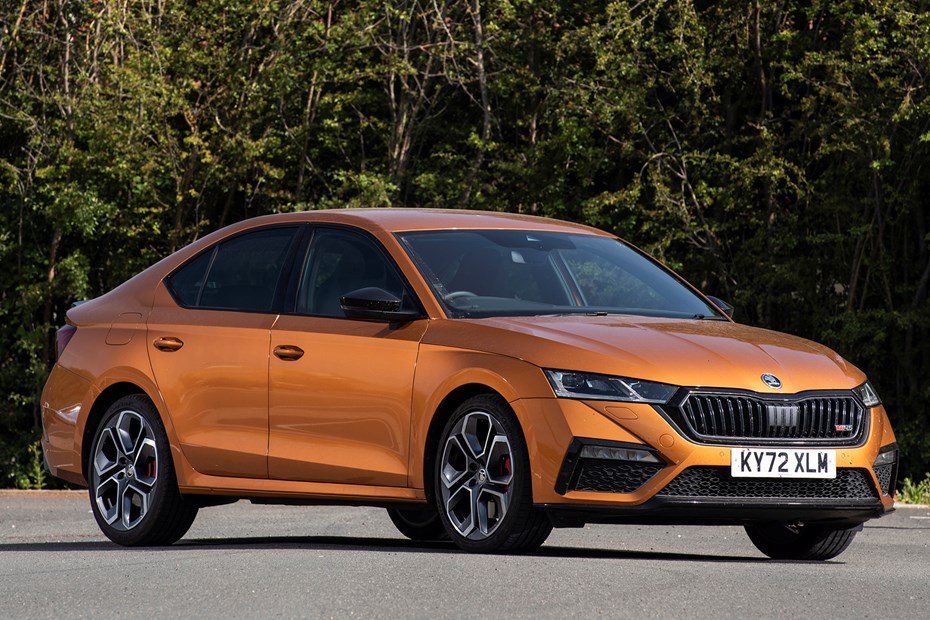
At a glance
| Price new | £34,230 - £41,040 |
|---|---|
| Used prices | £16,005 - £33,411 |
| Road tax cost | £180 - £590 |
| Insurance group | 25 - 27 |
Get an insurance quote with

|
|
| Fuel economy | 38.8 - 56.8 mpg |
| Range | 426 - 673 miles |
| Miles per pound | 5.7 - 7.3 |
| View full specs for a specific version | |
Available fuel types
Petrol
Diesel
Alternative fuel
Pros & cons
- Practical, easy to live with
- Quick and economical
- Three engines, two bodystyles
- Some annoying switchgear
- Lacks excitement
- Not the bargain it once was
Skoda Octavia vRS rivals
Overview
The Skoda Octavia vRS continues the Czech firm’s tradition of offering sensible fast family cars that combine hot hatch-style speed and capability with excellent practicality and generous safety kit. No vRS has ever been the last word in excitement, but they’re consistently capable and appeal to more mature drivers. This Octavia continues the tradition.
Like the Volkswagen Golf it’s so closely related to, the vRS is offered with three engines – the 2.0-litre petrol shared with the GTI, a diesel that’s also used in the GTD and a plug-in hybrid known as the iV that – you guessed it – is mechanically identical to the GTE. Unlike the Golf GTI/GTD/GTE, you can also specify your Octavia in estate form – and this review covers both bodystyles.
In many ways, the Octavia vRS is the perfect car – there’s a version to shape all eventualities. Want long range? Go for the diesel. Live in a city and have a charge point? Buy the plug-in hybrid. Need the best of both worlds? Have a petrol. Rivals to offer this level of flexibiilty are few and far between, but aside from the Golf, we’d count hot hatches including the Ford Focus ST and another VW Group offering, the Cupra Leon, as rivals.
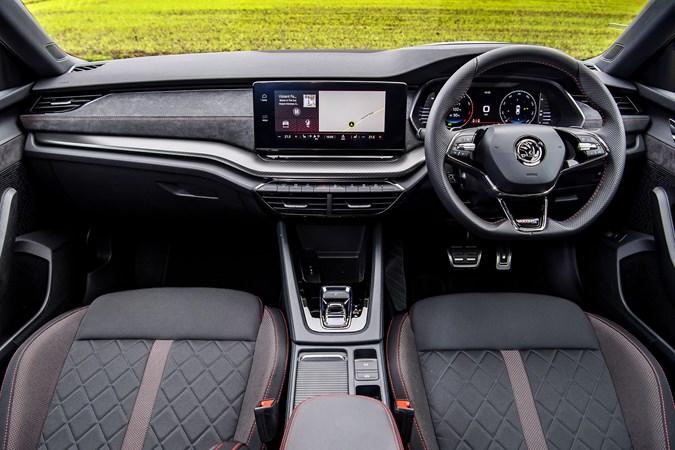
What’s it like inside?
The vRS’s interior differs from the standard Skoda Octavia interior in many small ways. You get red stitching, quilted trim, a three-spoke sports steering wheel, and supportive high-backed bucket seats up front. The central infotainment screen is large and easy to use, and the fresh air vents are mounted too low.
In terms of practicality, it’s a great choice, being a capacious family car, with especially impressive room in the rear. There are a useful number of storage cubbies, while the glovebox is unusually large, too. Overall very impressive.
The hatchback’s boot is deep and wide, and extremely well shaped. It offers 600 litres of boot space seats up, and 1,555 litres with them folded. The vRS Estate ups that to 640 and 1,700 litres, which is larger than many cars in the class above.
Comfort
We really rate the Octavia’s comfort, and what holds true for the standard version also applies here. Front-seat comfort is particularly good, although the driver’s pew can feel a little flat and unsupportive at first – a long journey soon sorts that.
It’s the same story in the rear – lots of room, slightly flat backrests and excellent long distance comfort. Rear headroom in the estate is better than the hatchback, which reinforces our view the latter version is the better fast family car.
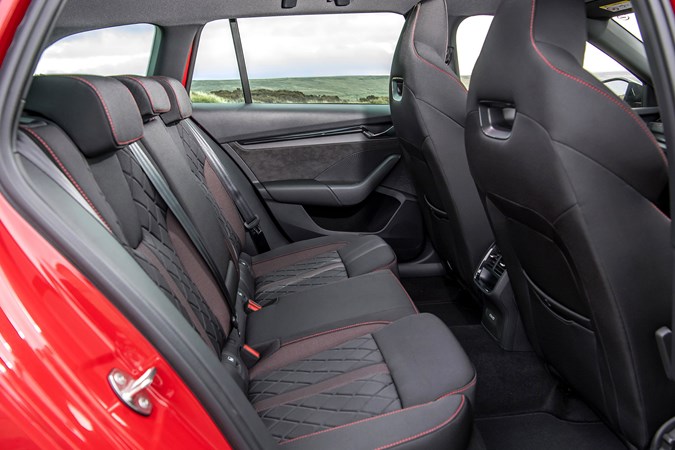
Safety
The Octavia vRS is a five-star Euro NCAP performer, meaning it’s a very safe car. This is one area where this model performs outstandingly well compared with its rivals, and is in no small part down to the technology shared with Volkswagen.
There is an excellent adaptive cruise control system and blindspot monitors as standard as well as collision avoidance tech that will control the car if your concentration or observation wavers. In addition, it will alert you to a potential collision at a junction, and warn you about traffic jams coming up.
Petrol engine
The 245hp shared with the Golf GTI is offered with DSG auto or six-speed manual. The 0-62mph time is 6.7 seconds for the former and 6.8 for the latter and maximum speed is 155mph. It’s a delightfully pleasant engine, and is just as happy trickling through the city in the highest gear possible as it is storming up the autobahn. The DSG can be ever so slow to respond if you want to overtake quickly, but it’s otherwise flawless. The manual is also very nice to use.
The petrol is quick, but it’s not enough to shove you into the back of your seat. You can opt for a smoother and more relaxed power delivery in Normal drive mode, which makes use of the torque to gently get you up to speed, and if you switch to Sport, this delivers a slightly more aggressive tune.
This seems to liven up the driving experience even further and makes the vRS feel most alert. Switch back to Normal mode and you immediately notice how all the controls are dulled back down again.
Diesel engine
The 200hp diesel is DSG-only, but you can also opt to have four-wheel drive which is quicker off the line than the front-wheel drive version. The 0-62mph times are 7.1 and 7.6 seconds respectively, while the top speed for both dips slightly to 151mph. The big selling point of the diesel is that it offers a decent turn of pace and 50+mpg on the motorway.
If this is what you really want from a performance family car, it will serve you well. But if you’re looking for an exciting hot hatch or performance estate then the diesel vRS is not the one to go for.
It’s all out of ideas at 3,500rpm and there’s very little need to rev it out. It’s not stimulating then – but at least turn in is sharp and because power is acheived at such low rpm, getting out of a corner feels fast. Overtaking on motorways and country roads only requires a flex of the right toe, too.
Hybrid engine
The plug-in hybrid vRS iV is available for those looking to reduce their fuel and tax bills, combining a 150hp 1.4-litre petrol with an electric motor to produce a combined 245hp. Like the diesel, this is also available as an automatic only, and takes 7.3 seconds to get from 0-62mph. Top speed is 139mph.
It’s probably the weakest of the three, sounding artificial and only capable of genuinely quick accleration if you’re prepared to nail the throttle – it’s almost the exact opposite of the diesel in terms of effort and reward. But despite that, battery-powered city driving is pleasurable, and it works well as a hybrid in relaxed driving.
It’s just that the vRS badging seems at odds with what this Octavia is capable of offering, and this drivetrain would probably suit a less sporting model variation.
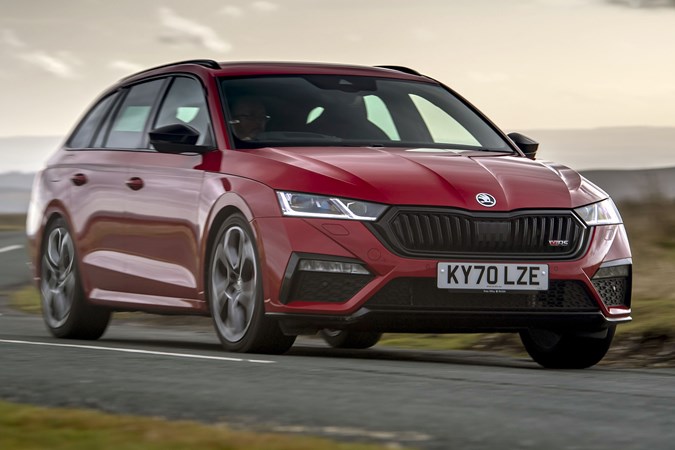
What’s it like to drive?
The vRS comes with 15mm lowered suspension, sharpened up steering and an electronic front differential system to help maximise traction. The steering weights up quite nicely in Sport mode and avoids being artificially heavy. The sharpened-up response is good without being nervous or twitchy, and you don’t have to wrestle the steering wheel as the electronic differential tries to manage traction levels between the front wheels. Does it excite or stimulate? Not really, but that’s not really what this car is all about.
We’ve tried the vRS with optional adaptive suspension, which comes as part of the Dynamic Chassis Control package. This adjusts the firmness of the suspension depending on the drive mode, allowing you to favour a softer ride quality or better body control depending on your mood. There’s a noticeable difference between the modes, which isn’t always the case with this option on some cars, and the Octavia isolates occupants from bumps well in its softest Comfort setting. Sport mode firms up the suspension without being too jiggly either.
There’s a fair amount of road noise from the 19-inch tyres, but the level of refinement in here remains good enough for long distance comfort. There are no vibrations sent through the steering wheel, seats or floor, and just the occasional bit of wind noise fluttering around the windscreen pillars.
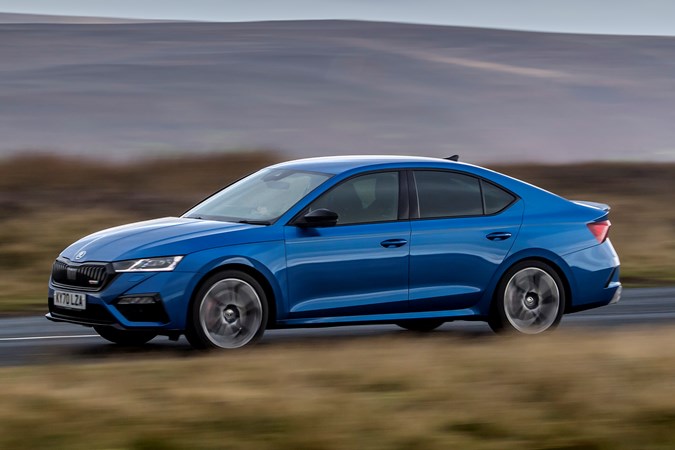
The 2.0-litre petrol engine always remains quiet, while the diesel vRS is noticeably louder than the petrol at idle, and when starting from cold. The augmented engine noise pumped through the speakers is irritating. The sound is reminiscent of an old-school V8 engine with a low rumble. It doesn’t feel that natural, and while it can sound pleasing at times deep down you know the engine isn’t making the noise.
The seven-speed DSG automatic remains smooth and quick to change gears but becomes much more eager to change down in Sport mode for when you need a burst of acceleration. The gearbox hangs onto gears longer before changing up, too, keeping you in the power band for better acceleration, but the vRS is best sampled in Manual mode when you use the steering wheel-mounted paddles.
Overall, there are more thrilling and involving performance hatches out there, but if you just want to get to places quickly in an undemanding way, this will get you there without causing much perspiration.
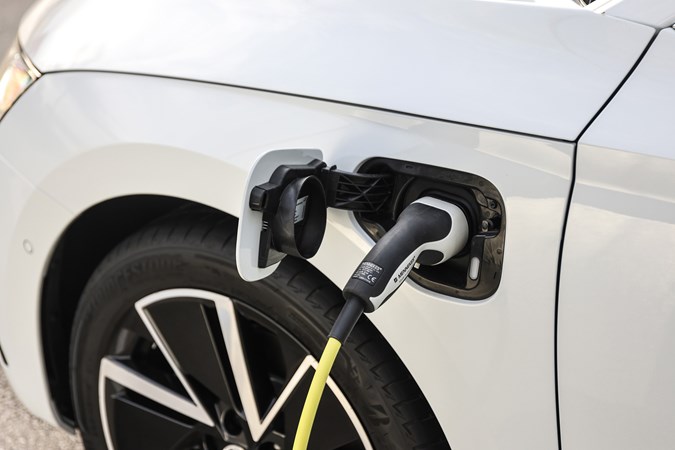
Ownership costs and reliabbility
The 245hp 2.0 TSI petrol is the most fun to drive, but the TDI diesel and iV plug-in hybrid versions are cheaper to run. Stick to petrol and official economy is 40.4mpg irrespective of whether you choose a manual or an auto. In real-world A-road and motorway testing, it was easy to average 45mpg, but this will dip to 36-38mpg with more spirited driving – still impressive for a 245hp sports hatch or estate.
The diesel is a 200hp unit that is DSG-only, and this manages up to 55.4mpg or 50.4mpg with four-wheel drive in official testing. We achieved between 49.1mpg and 59mpg in a vRS TDI during our six-month extended test that took in a mixture of motorway and country roads.
With the vRS plug-in, you’ll need to keep the hybrid battery charged up as often as possible to achieve near its 217.3mpg official figure. Real world range is limited to about 25 miles on battery alone, and it works as an effective hybrid for up to about 100 miles, unless you deploy battery-save mode – which hits overall fuel economy.
The Octavia vRS’s warranty is straightforward – two years unlimited mileage followed by a third year/60,000 miles, whichever comes soonest. There are separate three-year paint and 12-year body warranties too. Reliability is good, although we’d add the caveat that just about every model we’ve driven has suffered from infotainment glitches and crashes.
What models and trims are available?
Your choice of vRS is simple, and comes down to what type of engine you’d like to specify it with, and whether you want a five-door hatchback or estate. It’s unusual these days to have a petrol, diesel and plug-in hybrid to choose from, but that pretty much covers all bases for those looking for a swift family car.
Being a vRS, you get 19-inch diamond-cut alloy wheels and red brake calipers, as well as the usual bodykit and options for lairy paint colours. Despite being a sports model, it’s well equipped, so you get heated seats, adaptive cruise control, keyless ignition, connected infotainment, and front and rear parking sensors.
Options come in packs and these include two grades of winter packages (heated rear seats and washer jets for instance) and three levels of additional safety kit. Individual items, such as electric front seats, wireless charging and dynamic chassis control are also offered.
So, it’s a great all-rounder, but does that make the Octavia vRS a desirable hot hatchback? Read on for the Parkers verdict.



